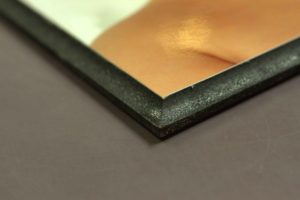Printing
Whether you’re printing your precious family photos, treasured holiday pictures, special occasions, your gallery or that important business or commercial image, genuine quality always shines through. Our high standard prints are suitable for customers and professionals alike and are of an ideal quality to preserve and frame ensuring your fondest of memories and keepsakes look their best.
We are always pleased that our customers can see the huge difference between low-quality printing with cheap photographic papers and printing when they view their photos or images. They look so good you’ll want to frame, hang and admire for years – whether they are your family photos, travel pictures, and special occasions images- you may even want to get them block mounted to keep them on display.
There are three kinds of gorgeous paper we can offer for prints, our professional-standard Epson Pigment Ink printer can print up to a metre wide and three metres in height, using pigment inks that are highly resistant to age and deterioration.
What papers are available?
We offer matte paper, which is non-reflective, with a textured, modern touch. Gloss paper is highly reflective, luxe and with a high shine. Lustre paper, which is what’s used in most applications, has an 80% gloss, making it a good everyday choice.
What’s the difference between pigment inks and standard printing inks?
Pigment inks offer three distinct advantages over standard dye inks, used in consumer-grade printers.
Firstly, pigment inks are less water-soluble. If an image printed with dye inks is saturated with water, the colours will smudge, run and feather out until the details are unrecognisable. Pigment inks resist water – but more importantly, humidity – far greater relative concentrations of water are present in the air in our climate, especially in proximity to the ocean here on the Sunshine Coast.
 Another advantage is that pigment inks are brighter, deeper colours, and able to be far more concentrated. The difference in vibrancy and clarity is stunning.
Another advantage is that pigment inks are brighter, deeper colours, and able to be far more concentrated. The difference in vibrancy and clarity is stunning.
Pigment inks are also resistant to deterioration. Deterioration of dyes and pigments is an inevitable process due to oxidisation and light, but speeds up in direct or indirect sunlight, especially in regions with a greater UV index, like we have here. Deterioration is most noticeable with colour fade – pigment particles resist reacting to UV and oxygen far better than dyes due to differences all the way down on the molecular level – making them a worthwhile investment for a quality print that will shine for years to come.
We take a great amount of pride in the quality of our prints, we are happy to share our expertise to make sure you get the best prints possible. If you have any questions, please contact us to find out more.
 (07) 5441 7322
(07) 5441 7322 


 (07) 5441 7322
(07) 5441 7322 
